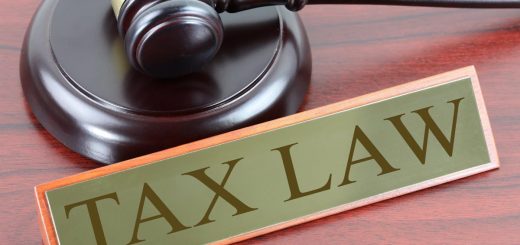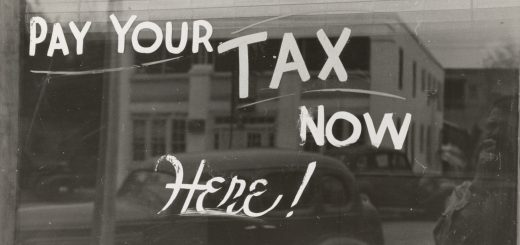General Anti-Avoidance Rule to the Rescue: Canada v Deans Knight Income Corp.

The Supreme Court of Canada (“SCC”) granted leave to Deans Knight Income Corporation (“Deans Knight”) on March 10th, 2022 to appeal a Federal Court of Appeal (“FCA”) decision from August 4th, 2021. The SCC will hear the appeal case, Deans Knight Income Corporation v Her Majesty the Queen, on November 2nd, 2022.
The appeal concerns the concept of “control” in the context of the general anti-avoidance rule (“GAAR”) under section 245 of the Income Tax Act (R.S.C., 1985, c. 1 (5th Supp.)) (“ITA”). The GAAR functions to capture abusive tax avoidance transactions designed to reduce tax liability. This case represents the first application of section 245 on subsection 111(5) of the ITA, and highlights the meaning of de jure control. If the Appellant prevails, this case constitutes another broadening of the GAAR’s powers in combating sophisticated tax transactions.
Counsel
Appellant (Her Majesty the Queen):
- Perry Derksen
- Matthew Turnell
- Eric Brown
- Kiel Walker
Respondent (Deans Knight):
- Barry R. Crump
- Heather DiGregorio
- Julia Lisztwan
Facts
This appeal represents the first judicial consideration of whether the GAAR applies to the acquisition-of-control element in subsection 111(5) of the ITA. The Tax Court (“TCC”) permitted public corporation Deans Knight to deduct unused non-capital losses via determining that the GAAR did not apply to a tax loss monetization agreement.
Respondent business Deans Knight is in the business of drug research and nutritional food additives, possessing $90 million of tax attributes from accumulated and unused non-capital losses and deductions. In 2007, the Respondent sought to realize the value of these tax attributes in the face of cash flow issues and a potential NASDAQ delisting due to dropping share price.
David Goold, the Respondent’s chief financial officer (“CFO”) between 2004 and 2010, suggested the possibility of a reorganization to realize 4 to 4.5 cents on the dollar for the unused tax attributes. The Respondent closed a plan of arrangement on February 27th, 2008 and incorporated a new company (0813361 BC Ltd.) on January 10th, 2008.
Matco Capital Ltd (“Matco”), a venture capital corporation, invested in the Respondent vis-à-vis entering into an Investment Agreement. The terms of the agreement guaranteed that (1) the Respondent could sell the remaining shares for a guaranteed amount of $800,000, and that (2) Matco has one year to propose a corporate opportunity that would create profits against the tax attributes.
In December 2008, Matco offered Deans Knight Capital Management – a mutual fund management corporation seeking a business opportunity in high-yield bonds – the chance to deploy the Respondent as a vehicle for an initial public offering. This offer intends to transform the Respondent into a shell. (The ITA loves to examine substance over form.) Deans Knight Capital Management and the Respondent signed a letter of intention on December 19th, 2008 for a corporate reorganization. Pursuant to the letter, the Respondent would transform into a dividend-paying investment corporation to allow Deans Knight Capital Management to capitalize on the tax attributes.
This arrangement yielded profits, and the investment company returned dividends to shareholders. The Respondent reduced tax liability via claiming non-capital losses in filing income tax returns from December 31, 2009 to December 31, 2012. The Minister of National Revenue reassessed the 2009 to 2012 taxation years and disallowed the tax deductions.
Issue
Writing for the FCA in 2022, when this case came up on the docket, Justice Woods allowed the Crown’s appeal. The central issue concerns whether the series of transactions (the letter of intent, the initial public offering, the arrangement, among others) constitute abuse of the ITA.
The Crown appeals the TCC decision, underscoring that Matco’s arrangement falls precisely into what the GAAR seeks to capture: abusive tax avoidance. The series of transactions, according to the Crown, frustrates the object, spirit and purpose of subsection 111(5) aimed at targeting “manipulation of losses of a corporation by a new person or group of persons, through effective control over the corporation’s actions” (paragraph 34 of the TCC decision).
Justice Woods clarified the fundamental meaning of subsection 111(5): restriction on the usage of non-capital losses if a person has acquired actual, not effective, control (including de jure control). Woods J replaced “effective” with “actual” control to prevent the parties from confusing effective control with de jure control. The word “actual” articulates an intentional choice by Justice Woods to contemplate the object, spirit and purpose of subsection 111(5). Via replacing “effective” with “actual,” Justice Woods illustrates that subsection 111(5) is broad enough to capture broader circumstances of control.
The Respondent submits that subsection 111(5) restricts loss carryovers only in the context of acquisitions of de jure control. Woods J rejected this position. Despite the existence of specific anti-avoidance rules (“SAARs”) in the ITA, the GAAR may still apply to transactions. SAARs aim to capture transactions in specified contexts whereas the GAAR applies to broader scenarios. Citing Birchcliff Energy Ltd v Canada, 2019 FCA 151 at paragraphs 54 to 55, Woods J held that the GAAR might inevitably capture transactions that escaped the SAARs.
Moreover, the application of section 245 allows courts to adopt a purposive approach. Subsection 111(5) seeks to prevent loss trading. Woods J, referencing a statement made by the Minister of Finance in 1963, held that the enactment of subsection 111(5) sought to prohibit transactions of loss carryovers. Woods J also referred to a Canadian Tax Journal article written by David Dodge, a senior Department of Finance official, in 1988 to clarify that the GAAR is also intended to capture transactions significantly reducing tax revenues resulting from loss carryforwards. Taxpayers are allowed to deploy a net capital loss (the sum of the taxable capital gain and allowable capital loss) to minimize taxable capital gains in any future year or the three preceding years.
Turning to the analysis of de jure control, Woods J articulated that the object, spirit and purpose of subsection 111(5) cover different forms of control. In Duha Printers (Western) Ltd. v. Canada [1998] 1 SCR 795 [“Duha Printers”], the SCC contemplated transactions aimed at dodging the de jure control test in subsection 111(5). In that case, the SCC opined that de jure control is mentioned because it constitutes a “relatively certain and predictable concept” to determine control (paragraph 58). Any distinction between de jure and de facto control should be Parliament’s responsibility.
After Duha Printers, Parliament responded via introducing the GAAR. Woods J held that the broader context of subsection 111(5) and the GAAR suggests that restrictions on loss carryovers are not solely limited to a de jure acquisition.
Justice Woods’ interpretation of the language of subsection 111(5) parallels the broad powers of the GAAR. This case highlights the flexibility of the ITA to crackdown on complex tax transactions.
Conclusion
Osgoode Hall Professor Jinyan Li has pointed out that the GAAR may be analogized as the government’s trump card to fight abusive tax avoidance planned by sophisticated taxpayers. Standing as another line of defense after the application of subsection 111(5) and numerous SAARs, section 245 of the ITA prevents sophisticated abusive tax transactions.
Both the TCC and FCA have characterized the interpretation of subsection 111(5) and the GAAR within the broader purpose of the ITA. Now, the respondent, appellant, and the ITA all await the November 2nd SCC hearing.
After deciding famous GAAR cases (for example, Copthorne Holdings Ltd. v. Canada 2011 SCC 63), the SCC encounters the GAAR in the context of control. Despite the changing facts of each case, courts ultimately contemplate the object, spirit and purpose of legislation. Perhaps substance always prevails over form.








Join the conversation